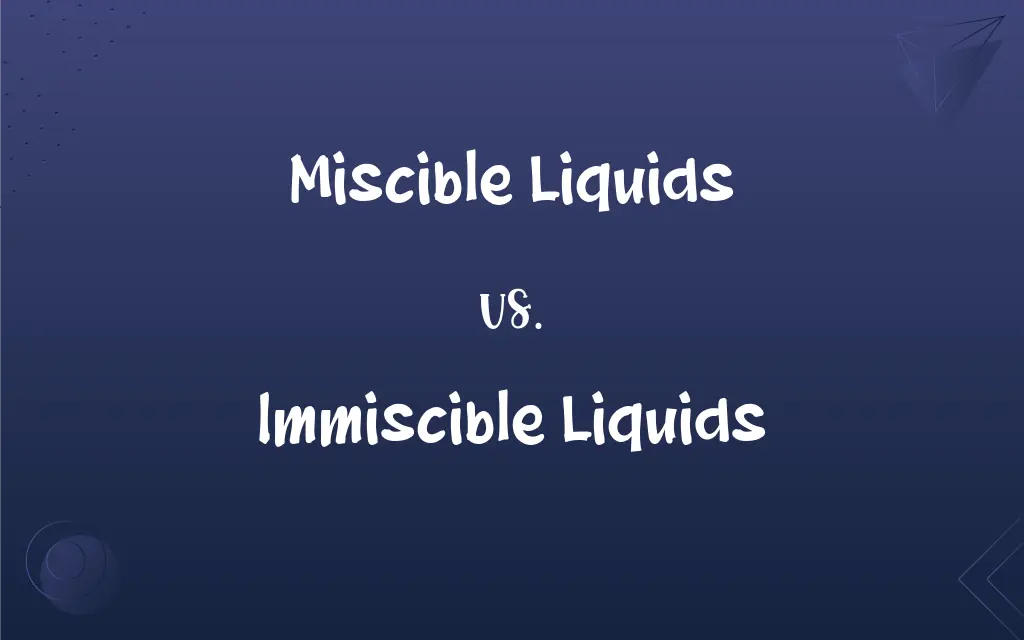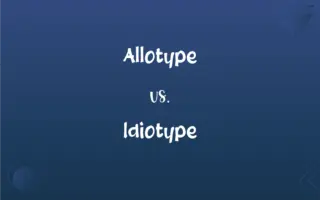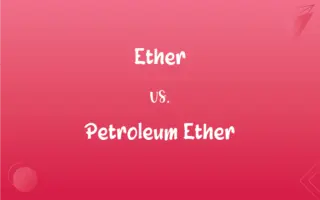Miscible Liquids vs. Immiscible Liquids: What's the Difference?
Edited by Aimie Carlson || By Janet White || Published on March 15, 2024
Miscible liquids can mix uniformly at any proportion, while immiscible liquids do not mix and form separate layers.

Key Differences
Miscible liquids and immiscible liquids represent two categories of liquid behavior when combined. Miscible liquids are those that can mix in any proportion to form a single homogeneous solution. For example, water and alcohol are miscible, as they can mix in all proportions without separating. In contrast, immiscible liquids are those that do not mix to form a homogeneous solution. Instead, they form separate layers when combined, like oil and water.
The fundamental difference between miscible liquids and immiscible liquids lies in their intermolecular forces. Miscible liquids have similar polarities or intermolecular forces, allowing them to blend into a single phase. This similarity in molecular structure facilitates the mixing process. On the other hand, immiscible liquids have different polarities or intermolecular forces, preventing them from mixing. This difference in polarity or molecular interaction causes them to remain separate.
The concept of miscibility is important in various chemical processes, where uniform mixing of liquids is necessary. For instance, in pharmaceuticals, the miscibility of liquids ensures consistent drug formulations. Conversely, the concept of immiscibility is used in processes like liquid-liquid extraction, where separation of components is desired. It's also observed in everyday phenomena, such as salad dressing, where oil and vinegar (an aqueous solution) remain separate.
In practical applications, the property of miscibility is exploited in industries like paint and beverage manufacturing, where a uniform mixture of various liquids is essential. Miscible liquids can also be used in chemical synthesis and reactions that require homogeneous mixtures. On the other hand, immiscibility is utilized in processes like oil spill management, where oil (immiscible with water) is separated from the water surface.
The behavior of miscible liquids can be altered under certain conditions, such as temperature and pressure changes, which might affect their solubility or miscibility. However, immiscible liquids generally maintain their immiscibility under normal conditions, and their separation is often visible, forming distinct layers or phases.
ADVERTISEMENT
Comparison Chart
Definition
Liquids that mix uniformly in any proportion.
Liquids that do not mix, forming layers.
Intermolecular Forces
Similar forces allowing seamless mixing.
Differing forces causing separation.
Resulting Solution
Homogeneous solution.
Heterogeneous mixture with distinct layers.
Practical Applications
Used in creating uniform mixtures.
Utilized in separation processes.
Dependence on Conditions
Miscibility can vary with temperature/pressure.
Generally consistent under normal conditions.
ADVERTISEMENT
Miscible Liquids and Immiscible Liquids Definitions
Miscible Liquids
Liquids that dissolve in each other in all proportions.
Acetone and benzene are miscible, used in industrial solvents.
Immiscible Liquids
Liquids that do not mix to form a uniform solution.
Oil and water are immiscible, forming separate layers when combined.
Miscible Liquids
Compatible liquids forming a homogeneous mixture.
Alcohol is miscible with water, essential in alcoholic beverages.
Immiscible Liquids
Liquids that resist blending into a single phase.
Mercury and water are immiscible, not forming a homogeneous mixture.
Miscible Liquids
Liquids that can mix together completely.
Water and ethanol are miscible, forming a clear solution.
Immiscible Liquids
Liquids that visibly separate after mixing.
Kerosene and water are immiscible, used in separation techniques.
Miscible Liquids
Liquids that blend into a single phase.
Glycerin and water are miscible, creating a uniform liquid.
Immiscible Liquids
Liquids that maintain separate identities when mixed.
Paraffin oil and water remain immiscible, used in lava lamps.
Miscible Liquids
Liquids that integrate fully when mixed.
Methanol and water are miscible, often used in laboratories.
Immiscible Liquids
Liquids that separate into distinct layers.
Vinegar and vegetable oil are immiscible, seen in salad dressings.
FAQs
Can temperature change miscibility?
Yes, it can affect the miscibility of some liquids.
Are oil and water always immiscible?
Generally, yes, under normal conditions.
What defines a miscible liquid?
Liquids that mix uniformly in any proportion.
Is alcohol miscible with water?
Yes, alcohol is miscible with water.
Can immiscible liquids be made miscible?
Not without chemical modification or emulsifiers.
Are all organic solvents miscible with each other?
Many are, but not all, depending on their molecular structure.
Can miscible liquids separate over time?
Typically, they do not under stable conditions.
What characterizes immiscible liquids?
Liquids that do not form a homogeneous solution when mixed.
Why are some liquids immiscible?
Due to differing polarities and intermolecular forces.
Is vinegar miscible with water?
Yes, vinegar is miscible with water.
Are glycerin and water miscible?
Yes, glycerin and water are miscible.
Can pressure affect miscibility?
It can, particularly in gases dissolved in liquids.
What happens when immiscible liquids are shaken?
They temporarily mix but eventually separate.
What role does polarity play in miscibility?
Similar polarity often leads to miscibility.
How is immiscibility used in industries?
In processes like oil extraction and liquid-liquid separation.
Why do immiscible liquids form layers?
Due to differences in density and molecular interactions.
Is miscibility a chemical or physical property?
It's a physical property of substances.
Can miscibility be predicted by molecular structure?
Often, based on polarity and molecular interactions.
Why are oil spills hard to clean in water?
Because oil and water are immiscible.
Is honey miscible with water?
Yes, honey is miscible with water, though it may require stirring.
About Author
Written by
Janet WhiteJanet White has been an esteemed writer and blogger for Difference Wiki. Holding a Master's degree in Science and Medical Journalism from the prestigious Boston University, she has consistently demonstrated her expertise and passion for her field. When she's not immersed in her work, Janet relishes her time exercising, delving into a good book, and cherishing moments with friends and family.
Edited by
Aimie CarlsonAimie Carlson, holding a master's degree in English literature, is a fervent English language enthusiast. She lends her writing talents to Difference Wiki, a prominent website that specializes in comparisons, offering readers insightful analyses that both captivate and inform.































































